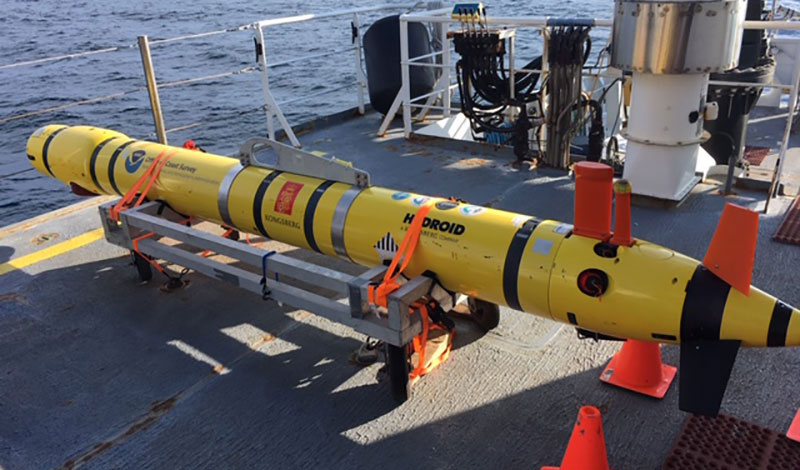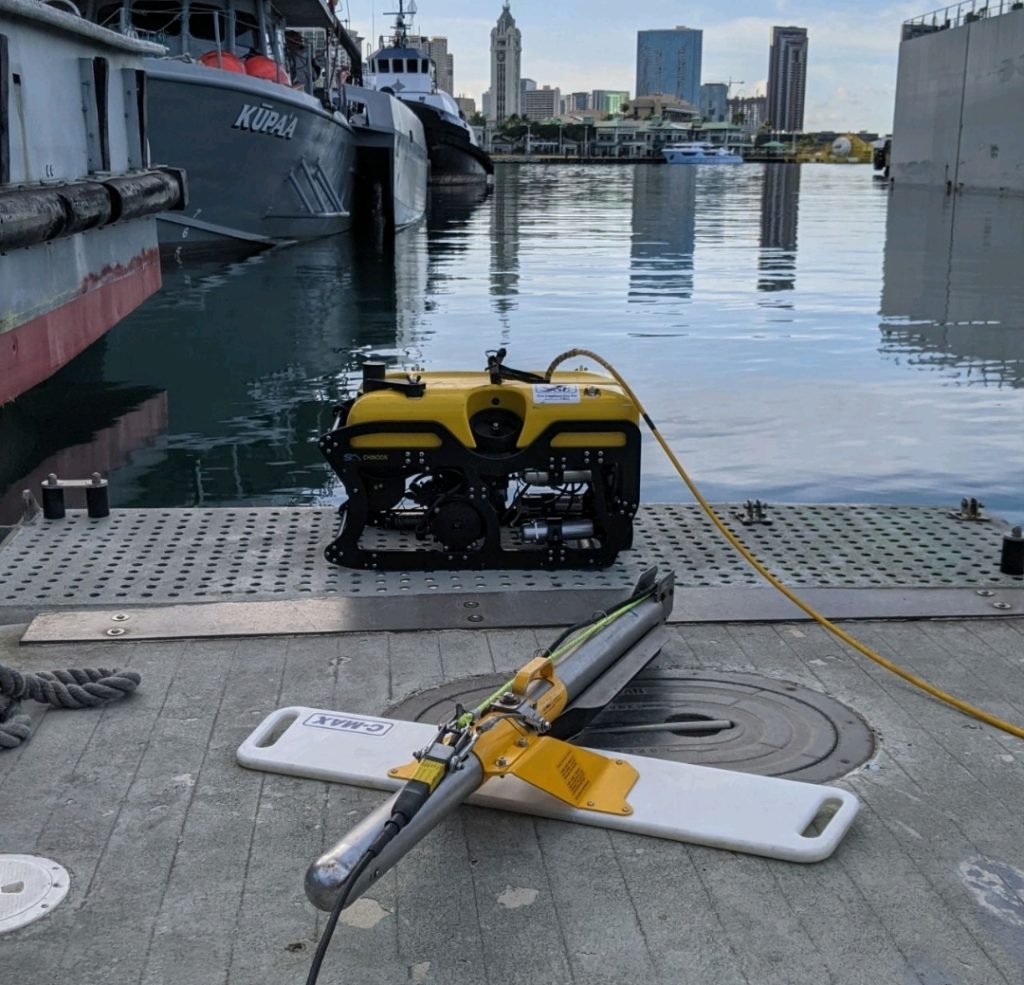In the previous blog post, we make a brief mention of the potential for ROV technology to create hybrid ROVs in the future. These hybrids are the combination of AUVs and ROVs (Remotely Operated Vehicle). But, what does that mean exactly? What is an AUV? An AUV, or Autonomous Underwater Vehicle, is an underwater robot that is used for a variety of tasks. They are similar to ROVs, however, they have some key differences in terms of how they function and their intended use of each vehicle.
AUVs
AUVs are underwater vehicles that can function independently of a human on a dry surface, usually on a dock or a boat. They act as the vehicle for a wide range of tools for data collection and observation. Tools can range from sensors to sonar to cameras all in the name of observation (or inspection) and data collection. AUVs usually need to be programmed with a specific set of instructions before being deployed. Once deployed with good instructions, they can complete their mission without human pilots. AUVs, as their name suggests, are autonomous.
ROVs
In contrast, ROVs are connected to the surface via a tether. This tether is required to power the ROV but it also allows for the transfer of data in real time. ROV pilots can see what is going on underwater without ever diving in themselves. Generally, ROVs in the workforce tend to be smaller and less complex than AUVs. Because ROVs are connected to their pilots, they do not need to be pre-programmed for each mission. Hence, this makes ROVs easier to work with for action-oriented tasks. For many ROV models (including SEAMOR ROVs), they simply need to be placed into the water and the pilot can take it from there. ROVs are versatile and can complete a wide range of jobs. Some of those tasks include, but are not limited to: inspection, repair and maintenance of underwater infrastructure, marine research, monitoring, and search and rescue.

Like AUVs, ROVs also have a bunch of tools that help them perform the task at hand. Both AUVs and ROVs play the role of taxi for the tools that are actually doing the job. They were built to get the tools to the job-site safely and back up to the surface once the job is done.
In Bullet Points
Functions of ROV:
- Inspection and maintenance of undersea structures, like oil rigs and shipwrecks
- Search and recovery operations
- Scientific research and exploration
- Sampling and surveying
- Assisting in deep sea mining
- Supporting subsea construction and installation projects
- …
Find out more on our Applications page.
Get in touch with us, here, to have a conversation about how ROVs can serve your business.
Functions of AUV:
- Mapping and Surveying of undersea terrains and environments.
- Scientific research and exploration.
- Monitoring of undersea resources like oil and gas deposit.
- Mine detection and mine countermeasure
- Data collection for oceanographic research
- …
In summary, an ROV is more action-oriented while an AUV is often used for autonomous data collection and observation.

